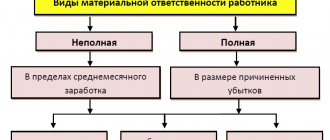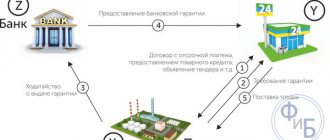What is the preamble to a contract?
Preamble is a Latin word (“preambulo”) that can be translated literally as “going before.”
The term indicates the introductory part of the agreement, containing the name and number of the document, as well as information about the parties to the agreement.
After the preamble, the main part of the agreement follows. Its subject is indicated, the rights and obligations of each party are introduced.
The document includes an expiration date; at the end, the participants’ details are written down and signatures are placed.
The preamble has legal force. Although the legislation does not stipulate strict requirements for its design, it must include a number of points, including:
- name of the form;
- document details;
- place of compilation;
- status of the parties (“Customer” and “Contractor”, “Lessor” and “Tenant”);
- Full name of representatives of each party.
The preamble of the agreement, a sample of which can be seen below, is not considered a mandatory part of the document.
At the same time, it is written down in almost all forms.
In common parlance, the preamble is simply called the “header”. In general, this is a standard element of the contract containing paper details and data of the parties.
back to menu ↑
Standard content - basic recommendations
The name of the introductory part of the normative act comes from the Greek word “praeambulus”, which means “going ahead”, “preceding”.
The preamble contains general information about the document and its parties. The legislation of the Russian Federation does not have strict requirements for the design of the introductory part, and there are also no recommendations on its composition.
However, there are the following norms that have developed over many years: Indicated by name.
For example, “Purchase and Sale Agreement”, “Work Acceptance Certificate” and so on.
This part must indicate the number that was assigned to the document. The date of signing is also included as part of the introductory part. Information about the place of detention, if required by the type of document. Name of the parties to the agreement being concluded. At the same time, we note that for legal entities this is the full name of the organization, individual entrepreneur and individuals - full name, passport details, if necessary, the individual entrepreneur number is indicated.
What the law says
To avoid unpleasant surprises, you should carefully read all parts of the contract, the preamble is also one of them.
The introductory section should contain details of the parties to the agreement.
Regarding transactions concluded with representatives of legal entities, it is worth considering the following legislation.
- Article 174 of the Civil Code regulates cases where the powers of a department of an organization or a representative in relation to a given transaction have been limited. If the intermediary goes beyond these restrictions when signing an agreement, the person in whose interests they are established may go to court. However, a positive decision on a claim is made only in cases where the other party to the agreement knew or should have been aware of the existence of such restrictions. If this fact is not proven, the court will not recognize the transaction as invalid.
- Article 183 of the Civil Code prescribes that if a citizen does not have the right to act on behalf of another person or is limited in this, the transaction will be executed on his behalf if the represented person does not approve this agreement over time. Let's put it simply: if a person enters into an agreement on behalf of a legal entity, but does not have the right to do so, all responsibility for the transaction lies with him. Since the company did not give him a power of attorney to represent the interests of the legal entity and did not approve of this agreement, losses cannot be recovered from it.
In view of the above-mentioned subtleties, you should carefully consider the sample preamble of the contract.
It must contain extremely complete information. It should be ensured that the person is authorized to carry out such transactions.
back to menu ↑
Answer
Name and number of the agreement;
Date and place of imprisonment;
Name of the parties;
Symbol of the parties in the text of the agreement;
Indication of the position, surname, name, patronymic of the representative of the party signing the agreement;
Title of the document;
List and explanation of terms and definitions used in the agreement;
An indication of the legal acts that govern the relations of the parties.
Let us consider in more detail the features of compiling each of the above points.
Name and number of the agreement. The name of the agreement is established by the parties to the agreement depending on the topic of the contractual relationship in accordance with the classification of agreements established by the Civil Code of the Russian Federation. Typically, the title of the contract includes information that allows the parties to the contract to determine the real content of the transaction and focus on the essential conditions for this type of contract.
The numbering of contracts is not mandatory and is carried out independently based on the requirements of regulations in force in the company or enterprise. At the same time, the absence of a contract number does not affect its validity and recognition as concluded.
Date of conclusion of the contract. The solution to many issues depends on the moment the contract is concluded, since from that moment its certain legal consequences begin to work. The date of conclusion of the contract is usually indicated in the text immediately after the name and number of the contract. In judicial and arbitration practice, the date of conclusion of an agreement is understood as the moment of its conclusion. The date of conclusion of an agreement subject to state registration is the date of its registration, unless otherwise provided by law.
Place of conclusion of the contract. The place of conclusion of the agreement, like the date of its conclusion, is indicated, as a rule, in the text of the agreement immediately after its name and number. The place of conclusion of the contract is determined by indicating in the introductory part of the contract any city or other locality.
Name of the parties. The names of the parties concluding the agreement are required in the preamble of the agreement. Indicating the names of the parties in the contract allows you to individualize the legal entity as a participant in the contractual relationship. If a legal entity enters into a relationship with an individual, the name of the party who is an individual is indicated by the last name, first name, and patronymic of that person. In this case, instructions are made without using initials
Symbol of the parties to the agreement. The symbolic designation of the parties to the contract is used as one of the techniques for concluding a contract. Immediately after indicating the name of the party in the preamble of the agreement, a symbol for this party is established, which is used later in the text of the agreement, about which a corresponding reservation is made.
Indication in the introductory part of the agreement of the position, surname, name, patronymic of the representative of the party signing the agreement and the name of the document confirming his authority. This part of the preamble is of great importance in recognizing the agreement as complying with the law. The last name, first name and patronymic of the authorized representatives of the parties must correspond to the data in the passport and document certifying their authority. It should be noted that given the personalized nature of the specified data - it is recommended to indicate last names, first names, patronymics in full.
List and explanation of terms and definitions used in the agreement. This subsection is indicated in the preamble if professional vocabulary, ambiguous terms, or ambiguous definitions are used in the text of the agreement. By deciphering the terms and definitions used in the contract, the terms and definitions within the framework of the concluded contract are specified and consolidated in order to avoid misinterpretation of the provisions of the contract and to exclude its misinterpretation by interested third parties or in the event of a dispute with the counterparty.
We invite you to familiarize yourself with: Scheme for obtaining a consumer loan
Regulatory legal acts that regulate the relations of the parties. In the text of the preamble to the contract, the parties may indicate the legal acts that govern the relations of the parties regarding the concluded contract. Such an indication is not mandatory, but at the same time, the inclusion in the text of the preamble of the contract of references to the legal acts that guide the parties when drawing up contractual relations makes it easier for the parties and third interested parties to implement and understand the terms of the contractual relationship in parts not covered by the text of the contract.
In the case where the party to the agreement is an individual entrepreneur, his registration data is indicated in the preamble. When concluding with an individual, the preamble must contain his passport details. It can be used to determine whether an individual is a resident or non-resident.
The first part of the preamble – name and details
The preamble of the agreement, a sample of which is presented in the article, begins with the title of the document.
In some cases, a number is added to the name. This procedure applies more to organizations.
It all depends on the principle by which the agreements concluded by the company are identified:
- by number;
- by counterparty.
The title of the document essentially answers the question: what is the agreement for?
Here they indicate that this is a purchase and sale agreement, a supply agreement, a construction agreement, a service agreement (under which you can also write a claim), and so on.
Important: indicating the number is not a mandatory requirement when writing the preamble.
When an organization enters into a large number of contracts, it is more convenient to sort them by counterparties.
This will speed up the search for the right paper if problems arise.
When a number is specified in the sample contract preamble, the documents will be distributed in chronological order.
But it is unlikely to be possible to encode the name of the counterparty company and other features in the form of symbols.
back to menu ↑
What information does the introductory section include?
The preamble of each treaty reveals the main points:
- Subsection title.
- Information on the text of the document.
- Name.
- What will be discussed in the official form (sale and purchase agreement, lease, contract for the provision of contracting services or supply of goods).
- Initial information (date of creation, contract number)
If the parties to a transaction certify a document with their signatures at different times, then it will have legal force from the moment it is signed by the last authorized person.
In practice, the date contained in the introductory part should be similar to the moment the agreement was signed by the other party.
We continue to work on the agreement - names of the parties
Now let's look at the next point - the names of the parties.
This and the next points play an important role in how to correctly write the preamble of a contract.
Ideally, you should enter the names of both sides in full. For a legal entity this is the full name of the organization, for an individual - last name, first name, patronymic.
It is important that the information provided corresponds to the data specified in the constituent documents.
In addition, a conditional name is introduced, determined by the subject of the agreement.
In the sample contract preamble, you can find such names of the parties as “Customer” and “Contractor” in the case of provision and “Tenant” in the case of rent.
Important: it is allowed to use only those conventional names of the parties that are permitted by the Civil Code. Otherwise, confusion may arise.
back to menu ↑
Drawing up a design studio contract, part 3: Structure of the contract
The contract should not be a hard-to-read continuous canvas of chaotic text.
It should be structured if you have nothing to hide. In addition, there are mandatory and established sections, which I will describe below. It is worth remembering the principle of freedom of contract. That is, with rare exceptions, there are no strictly fixed names and formulations. You are free to create your own structure, your own section names.
Just don’t overdo it, so that later there will be no problems in the interpretation of the text by the parties and the arbitration judge.
Typically the following sections are present:
- Preamble.
- Terms and Definitions.
- Subject of the agreement.
- Cost and payment procedure.
- Deadlines.
- Rights and obligations of the parties.
- Responsibility of the parties.
- Confidentiality.
- Force majeure circumstances.
- Dispute resolution.
- Termination of the contract.
- Final provisions.
- Details of the parties.
- Signatures and seals of the parties.
We have sections in the agreement that describe the procedure for interaction between the parties, exchange of correspondence, and important messages. Important points of interaction, such as design approval, should be described in the form of a procedure and recorded in the contract.
What we colloquially call the “head” of the agreement, respectable people call the preamble. The details of the contract and the parties are indicated here. The contract details are not bank details. This is the number, place and date of the agreement. Each party ensures that the agreement is registered under a specific number. How to assign numbers is a personal matter for each party.
Therefore, the contract usually has two or more numbers - according to the number of parties, and the numbers are separated by a slash in the order in which the parties are listed.
To avoid any misunderstandings, I recommend not using forward slashes in your internal numbering.
For example, if the header says “1231/U/2314,” then how can you figure out where the letter “U” belongs? How are the contracts numbered: “1231/U” + “2314” or “1231” + “U/2314”?
The place where the agreement is drawn up is of significant importance for tax purposes. In most cases, it is worth indicating your city. There are several important points in the description of the parties. First, enter the full names of legal entities correctly.
Attention! The names of the parties in the preamble and on the seals must match letter for letter, otherwise the contract may be declared invalid due to a stupid typo.
Secondly, use the terms correctly, depending on the type of contract. For example, if this is a contract, then the parties should be called “customer” and “contractor”. If this is a contract for the provision of a service, then the parties will be called “customer” and “performer”. In no case should you mix “contractor” and “performer” in one agreement, unless these are three different parties agreeing. By the way, if the agreement is drawn up incorrectly and is considered void (there is such a concept in law), then the transaction will be qualified as a tax offense. Simply put, even if you did not plan to evade taxes, you can still be fined.
Subject of the agreement
To put it simply: what are you actually agreeing on? The crux of the deal. It is clear that there will be a bunch of other conditions regarding payment, deadlines, sanctions and other things. In the subject of the contract you indicate the essence.
For example: “The Contractor undertakes to perform the work specified in Appendix No. 1 (technical specifications) and transfer its result to the Customer, and the Customer undertakes to accept and pay for the result of the work.” This is a basic formulation, it can be expanded and supplemented.
For example, include other important agreements in the subject of the contract, say, on the transfer of certain rights.
Terms and Definitions
This section is very specific and difficult. There are practically no legal, unambiguous formulations in our industry. In relation to web development: the parties should agree on what they consider, for example, a website.
Otherwise, it will turn out that the contractor had in mind the design, templates and engine, but the customer also wants written content.
By the way, it would be great to organize a working group here and jointly develop some terms and definitions and sort them out with lawyers.
Cost and payment procedure
This section is an essential term of the contract. If the contract or appendices to it do not contain a value or a method for determining it, the contract may be recognized as not concluded! With all the ensuing consequences. In my previous post, I recommended adding the cost to the app. This is exactly what we have done.
In the section “cost and payment procedure” we refer to the annex, which is an integral part of the contract.
Advice for companies working on a “simplified” basis: after the cost, be sure to write “VAT exempt.” And in the contract, and in acts, and in accounts.
If the money is sent with VAT, then there will be extra hemorrhoids with their return and potential misunderstandings with the tax office.
The order of calculations is an important topic. Usually they write here, they say, within so many banking days from the moment of such and such, transfer to the current account... payments in rubles... and so on.
In one of the previous posts, I wrote that calculations should be carried out in stages. This is what allows us, in conditions where clients are completely late on their last payments, not to go into the red. This is the phasing and payment scheme that needs to be written down in the contract (or in the appendix - a payment schedule, like ours).
I don’t want to write much today, but a continuation will probably follow










